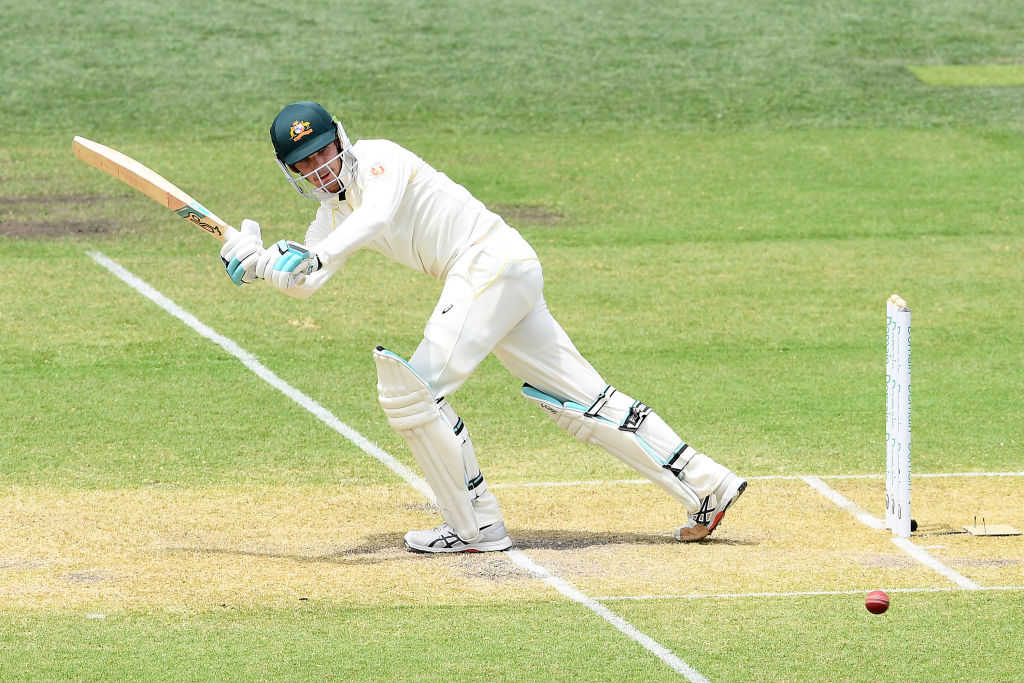India vs Australia | Takeaways: Handscomb’s short innings of promise and value of experience in Test cricket

BCCI
Ravichandran Ashwin’s fine bowling performance today somehow made Indians forget the batting debacle of the opening day, keeping the game evenly balanced. On a day, where disciplined bowling made the highlights, Peter Handscomb and Travis Head gave Australia some reasons to smile.
Handscomb gives Australia a reason to smile
Peter Handscomb has always been touted as a fine batsman in Australian circles and it is a shame that he has failed to make it to all the Test matches that Australia play. He has got a superb defence and his Ranchi resistance could well be remembered as one of the finest backs-to-the-wall innings in the difficult conditions, during which he spent as many as 210 overs in the field absorbing a mountain of pressure. However, his spot was never assured and when experts question his tactics against James Anderson, he was eventually dropped from the team at the end of last year's Ashes Test in Adelaide.
But most importantly, he knew that he had a problem. He worked with Chris Rogers and also his Victoria coaches Andrew McDonald and Lachlan Stevens to find a better balance while confining himself inside the crease. Today that change was on the show. While Anderson exposed him by bowling tight lines and made him stand unbalanced inside the batting crease last year, Handscomb demonstrated a very good weight transfer mechanism by leaning forward into his drives today. When Ishant Sharma and Jasprit Bumrah kept a nagging line to play on the backfoot, he used his forward defence, but the weight transfer through the high backlift made sure that he didn’t suffer the same problem anymore. He might have scored only 34 runs, but his assured innings gave Australia a reason to smile.
Ravi Ashwin vs Marcus Harris - Experience comes out on top in the mini-battle
“Marcus Harris is a flashy batsman - a clone of David Warner” - Murali Kartik was all excited seeing a pretty similar looking batsman taking up Warner’s role. He even went as far as convincing Michael Clarke, but the as the game started, it was a clear anomaly. He might be looking like a Warner clone, but his batting stance was a perfect copy of another glorious Aussie opener - Justin Langer, current coach of the Australian cricket team. Going against the reputation of hard-hitting opener, Harris, with his closed stance, kept on defending and waited for the spinner to come. Of course, Ravichandran Ashwin would be an easier proposition in Australia. Or so did he think.
When the ball became old, Kohli turned to Ashwin. The Aussie, sensing an opportunity to break the shackles, went down the track a couple of times and played the ball over the covers. But that is where experience comes to picture. Ashwin may have had a terrible record in Australia, but he is four years wiser now since the time he had last visited Ashwin. Seeing Harris is going to take a very different approach, he pushed the ball quicker and kept Harris in his crease. Then he bowled a full ball to drift back into him and Harris pressed forward and defensively played a fair way in front of the front pad and the inside-edge got the safe hands of Murali Vijay at silly-point. The line and mechanism of the ball was an interesting one as when it left the hand it was on outside off and then remained straight for a while before drifting in late. Mark Waugh on commentary said that it was a half-volley and demanded an attacking shot, but the thing that it drifted in, it would have been difficult for him. Ashwin deceived him and there was a little Harris could do.
Can Indian pacers better their lengths in the second innings
Indian pacers were excellent in their approach from the beginning. They bowled full balls to make less room for strokes and brought the edge chance to the fore. While Ishant took the ball into the right-hander, Bumrah took it away, making a fine spectacle of pace bowling. However, one might question that decision as the innings progressed. They didn’t ask the Aussie batsmen to drive as much as Australia did to India and as a result, they got too many short balls to work with on the leg-side.
It might have triggered by the fact that the pitch had flattened out and bowling full balls would be a dangerous tactic and they would go for runs. That was understandable given India didn’t have a lot of runs to work with. But as Australia lost some of the wickets thanks to their inability to play the full-length balls, India could have tried that in their second burst (post-Ashwin spell) in the first innings. Ashwin, on the other hand, bowled significantly slower than the previous tour, allowing the ball to be tossed up above the eye-line, forcing the batsmen onto the front foot. Usman Khawaja fell to a ball which gripped in the surface and the attacking mode was key for him. It’s not to say that pacers were not attacking, but it was a tactic that had lesser threat than otherwise.
